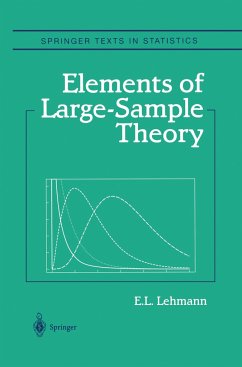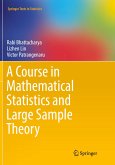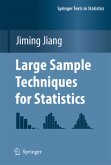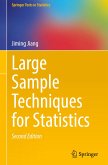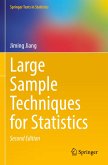Elements of Large-Sample Theory provides a unified treatment of first- order large-sample theory. It discusses a broad range of applications including introductions to density estimation, the bootstrap, and the asymptotics of survey methodology. The book is written at an elementary level and is suitable for students at the master's level in statistics and in aplied fields who have a background of two years of calculus.
E.L. Lehmann is Professor of Statistics Emeritus at the University of California, Berkeley. He is a member of the National Academy of Sciences and the American Academy of Arts and Sciences, and the recipient of honorary degrees from the University of Leiden, The Netherlands, and the University of Chicago.
Also available:
Lehmann/Casella, Theory at Point Estimation, 2nd ed. Springer-Verlag New York, Inc., 1998, ISBN 0- 387-98502-6
Lehmann, Testing Statistical Hypotheses, 2nd ed. Springer-Verlag New York, Inc., 1997, ISBN 0-387-94919-
16
E.L. Lehmann is Professor of Statistics Emeritus at the University of California, Berkeley. He is a member of the National Academy of Sciences and the American Academy of Arts and Sciences, and the recipient of honorary degrees from the University of Leiden, The Netherlands, and the University of Chicago.
Also available:
Lehmann/Casella, Theory at Point Estimation, 2nd ed. Springer-Verlag New York, Inc., 1998, ISBN 0- 387-98502-6
Lehmann, Testing Statistical Hypotheses, 2nd ed. Springer-Verlag New York, Inc., 1997, ISBN 0-387-94919-
16
From a review:
EUROPEAN MATHEMATICAL SOCIETY
"The book also contains rich collection of problems and a useful list of references, and can be warmly recommended as a complementary text to lectures on mathematical statistics, as well as a textbook for more advanced courses."
EUROPEAN MATHEMATICAL SOCIETY
"The book also contains rich collection of problems and a useful list of references, and can be warmly recommended as a complementary text to lectures on mathematical statistics, as well as a textbook for more advanced courses."
EUROPEAN MATHEMATICAL SOCIETY
"The book also contains rich collection of problems and a useful list of references, and can be warmly recommended as a complementary text to lectures on mathematical statistics, as well as a textbook for more advanced courses."
"The book also contains rich collection of problems and a useful list of references, and can be warmly recommended as a complementary text to lectures on mathematical statistics, as well as a textbook for more advanced courses."

